Browse Primary Sources
Locate primary sources, including images, objects, media, and texts. Annotations by scholars contextualize sources.
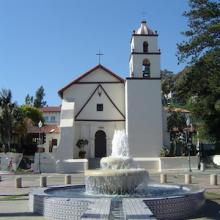
Old Mission San Buenaventura
Known as the ‘Mission by the Sea,’ this church once belonged to Spain’s extensive network of missions throughout the modern-day US Southwest. It was founded in 1782 by Franciscan friars whose objective was the evangelization of the native peoples in the region, who were the Chumash. The church complex, which included aqueducts, was built with their labor.

San José de Guadalupe
This church was founded in the late-eighteenth century by Francsisan friars in modern-day Fremont, California. Their goal was to establish a settlement to evangelize the native peoples and coerce them into adopting Spanish ways of living, worshiping, and working.

Misión San Cayetano de Tumacácori
This church was founded during the late-seventeenth century, when the Spanish Crown claimed this region as the northern border of its empire in North America. Throughout this period, the monarchs of Spain allowed missionaries to establish settlements in the modern-day US Southwest in order to evangelize the native peoples.

Mission San Xavier del Bac
Located in southern-Arizona, this mission was originally founded by Spanish friars in the late-seventeenth century. The church that stands today was built with indigenos labor in the following century. During the colonial period, the Crown authorized the establishment of many similar church complexes throughout the modern-day borderlands of the United States and Mexico.
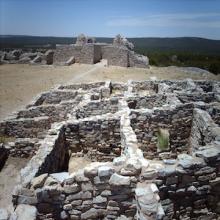
San Ysidro and San Buenaventura de Humanas (Gran Quivira)
This church complex was established by Spanish Franciscan friars in modern-day New Mexico in the early seventeenth century. The Crown authorized the creation of several missions throughout this region with the objective of converting the native peoples to Catholicism. The target for these efforts at this mission were the Salinas Pueblos.
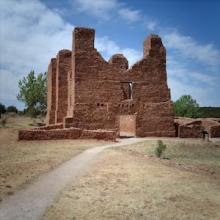
Nuestra Señora de Purísima Concepción de Quarai
This church complex was built in the early-seventeenth century as part of Spanish friars’ efforts to evangelize the native peoples. Yet within 50 years, the settlement stood abandoned as a result of natural disasters and sustained military attack from rival indigenous groups. Only ruins of its stone structure remain, located near Albuquerque, New Mexico.
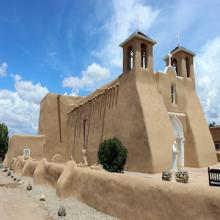
Misión San Francisco de Asís
Throughout the seventeenth and eighteenth centuries, the Spanish Crown authorized the founding of dozens of missions in the modern-day borderlands region of the United States. During this period, these territories were the frontier of Spain’s empire in North America, close to regions claimed by British, French, and indigenous groups.
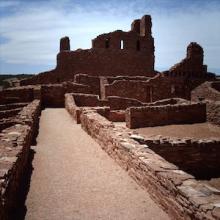
Misión San Gregorio de Abó
The San Gregorio de Abó Mission once operated as a site of Spain’s evangelization efforts in the Americas. As the Spanish crown expanded its empire throughout North, Central, and South America and the Caribbean, it encountered a major obstacle: a shortage of bureaucrats to run all of the governments it was establishing.
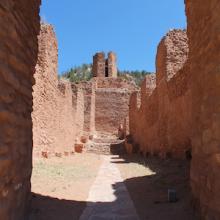
Misión San José de los Jémez
The San José de los Jémez Mission is located near Albuquerque, New Mexico. It once belonged to a larger group of Spanish colonial churches along what is now the Us-Mexico borderlands. It was originally built in the early-seventeenth century to evangelize the native peoples, including the Jemez. Today, stone ruins remain.

Misión San Lorenzo de Picuris
In the mid-seventeenth century, Spanish friars built a mission near modern-day Taos. The goal of this settlement was to convert the native peoples to Christianity. In this area, the local communities were the Picuris.
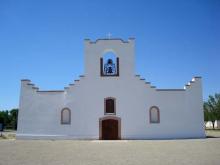
Nuestra Señora de la Concepción del Socorro
The Nuestra Señora de la Concepción del Socorro was originally founded in the late-seventeenth century in modern-day New Mexico. It was moved in the eighteenth century to the El Paso region after local indigenous groups rebelled against Spanish rule, although flooding destroyed that structure soon after. The adobe church that stands today was built in the 1840s.
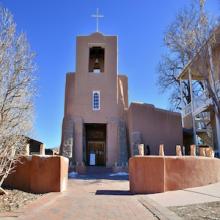
Misión San Miguel (New Mexico)
The San Miguel Chapel was built between 1610 and 1625 as part of the Spanish Crown’s efforts to evangelize the native peoples of the Americas. Located in modern-day Santa Fe, this church complex aimed to convert the Tlaxcalan community under the supervision of Francsican friars, while coercing them into Spanish ways of life.
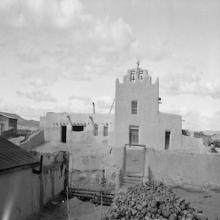
Misión San José de Laguna
The San José Laguna Mission is one of several Spanish colonial churches that still stands in modern-day New Mexico. It was built in the late-seventeenth century by Spanish friars with indigenous labor. The objective for this type of settlement was to evangelize the native peoples, which here included the Kawaiks, teaching them about the Catholic church and European ways of life.
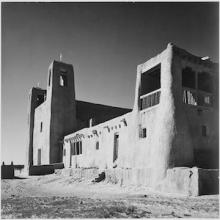
Misión San Estévan del Rey de Ácoma
Located in modern-day New Mexico, this church was founded in 1629 by Spanish priests in 1629. It belonged to the Spanish monarch’s larger project of converting the native peoples of the Americas to Christianity. The indigneous communities who lived, worked, and worshipped at the San Estévan del Rey de Ácoma mission built the structure. Many came from the Acoma people.
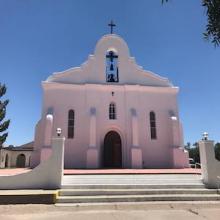
Misión San Elizario
Located in modern-day El Paso, Texas, the San Elizario Mission was originally established in 1789 by Spanish friars. The structure that stands today is considerably newer (1877) because a series of natural disasters destroyed previous buildings. Its name originates from the patron saint of the Spanish troops stationed in the region, San Elizario.
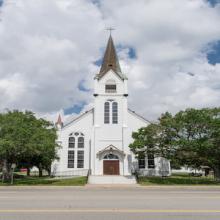
Misión Nuestra Señora del Refugio
The Nuestra Señora del Refugio Mission was a Spanish colonial church complex built in the late-eighteenth century. By this period, Spanish friars had established dozens of similar communities throughout the modern-day US Southwest. At this time, this region functioned as a borderlands between Spain’s possessions and those of France and England.
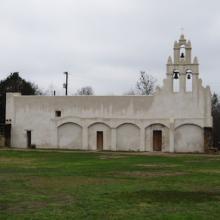
Misión San Juan Capistrano
The Misión San Juan Capistrano was a Spanish colonial complex intended to evangelize the native peoples. Although Spain claimed vast stretches of territory throughout the Americas, it struggled to produce enough bureaucrats to staff local governments.
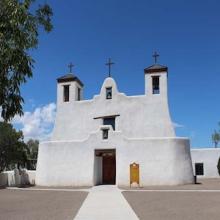
Misión San Agustin de Isleta
This church complex, located near Albuquerque, New Mexico, once belonged to a network of Spanish colonial missions. During the seventeenth and eighteenth century, the region that comprises the Southwetern United States became a borderlands between territories claimed by Spanish, French, English, and indigenous groups.
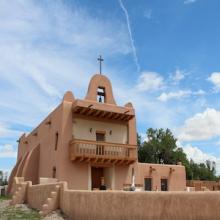
Misión San Ildefonso
The San Ildefonso Mission, once operated as a Spanish colonial church near Santa Fe, New Mexico. Its adobe structure was built with indigenous labor under the supervision of Francsican friars. The objective of this church complex was to convert the native communities to Catholicism and introduce them to Spanish ways of life.

Misión Nuestra Señora de la Purísima Concepción de Acuña
The Spanish Crown claimed possession of vast territories throughout North, Central, and South America between the late-fifteenth and early and nineteenth centuries. The region that comprises the modern-day US Southwest served as borderlands between indigenous communities, and Spanish, French, and English colonies.